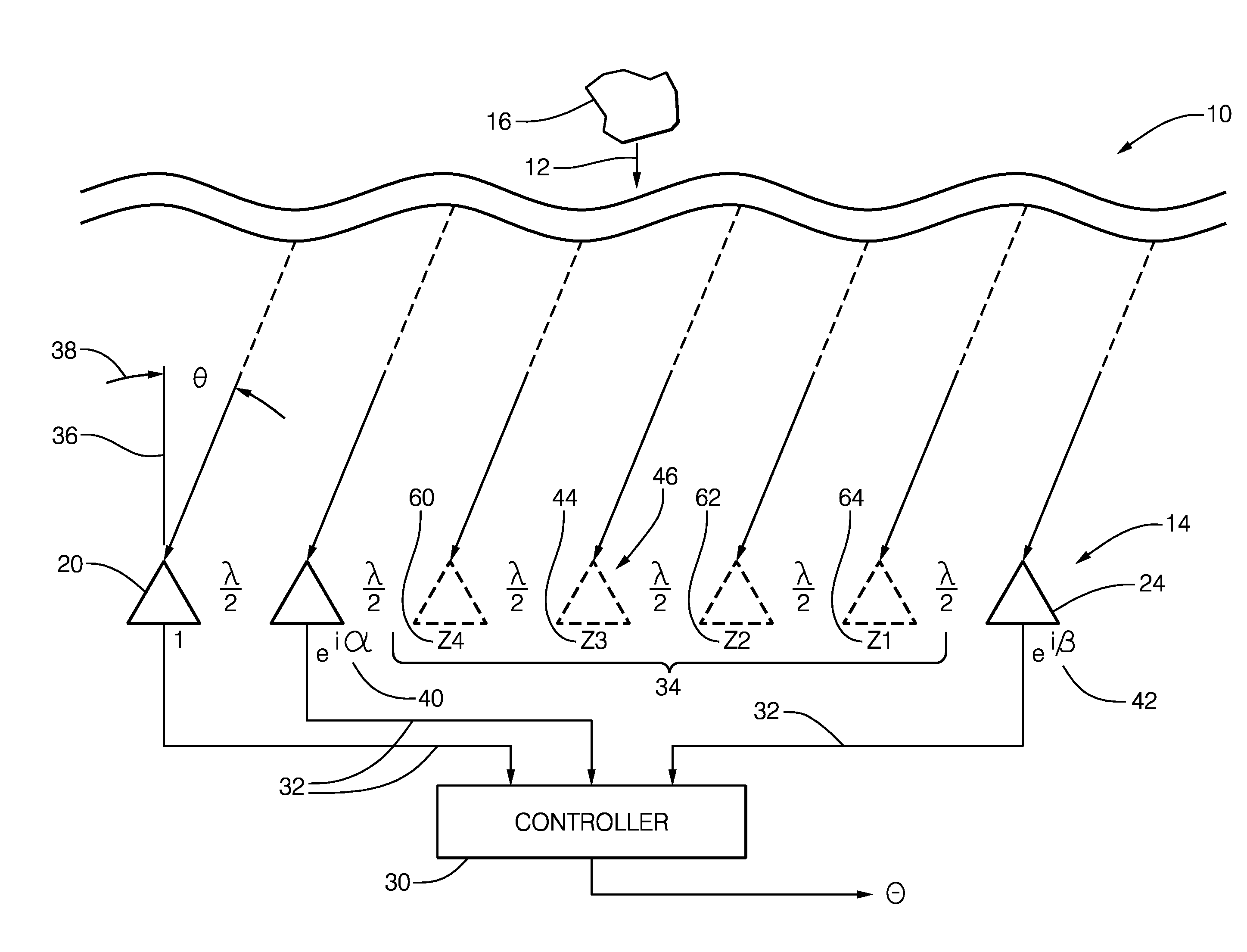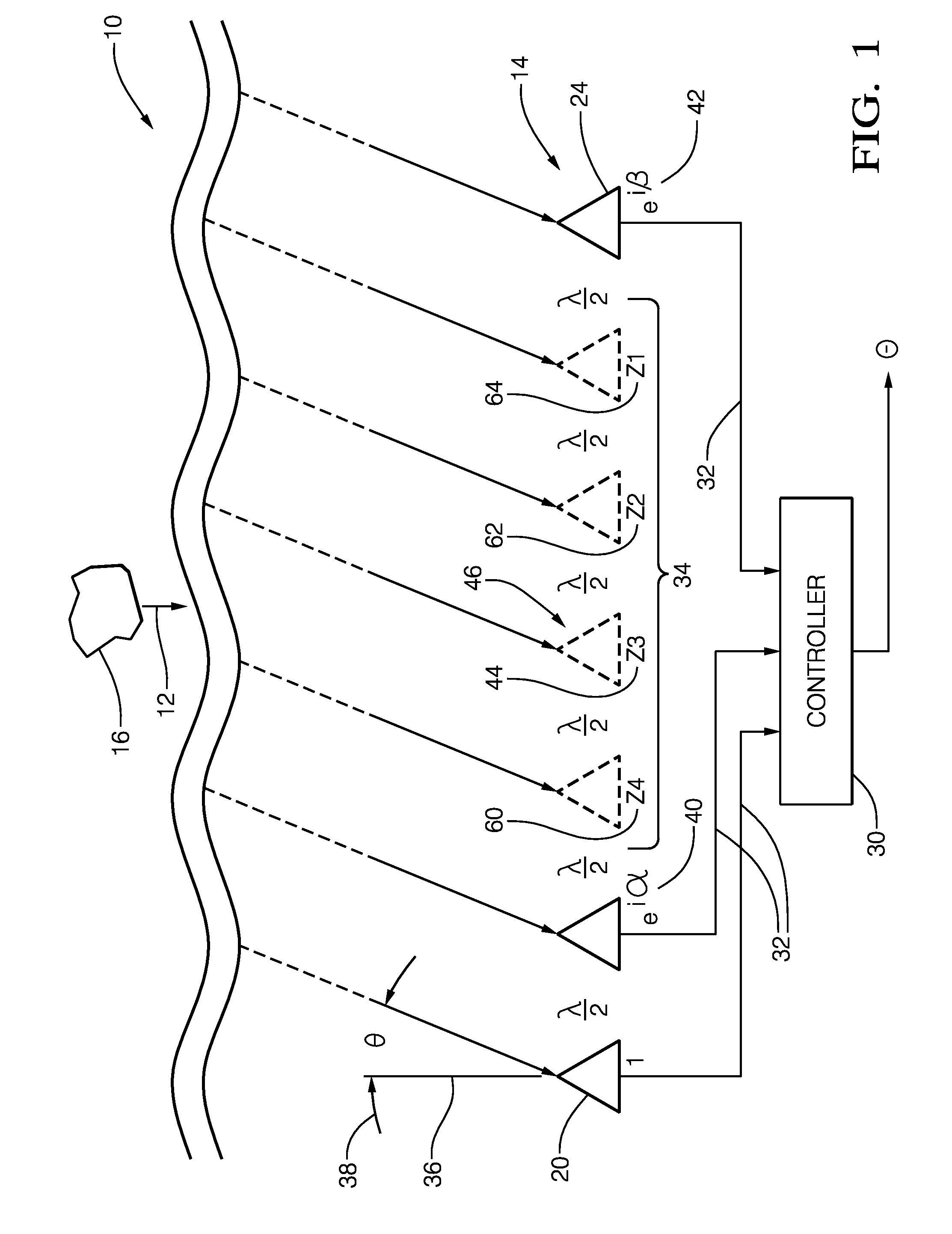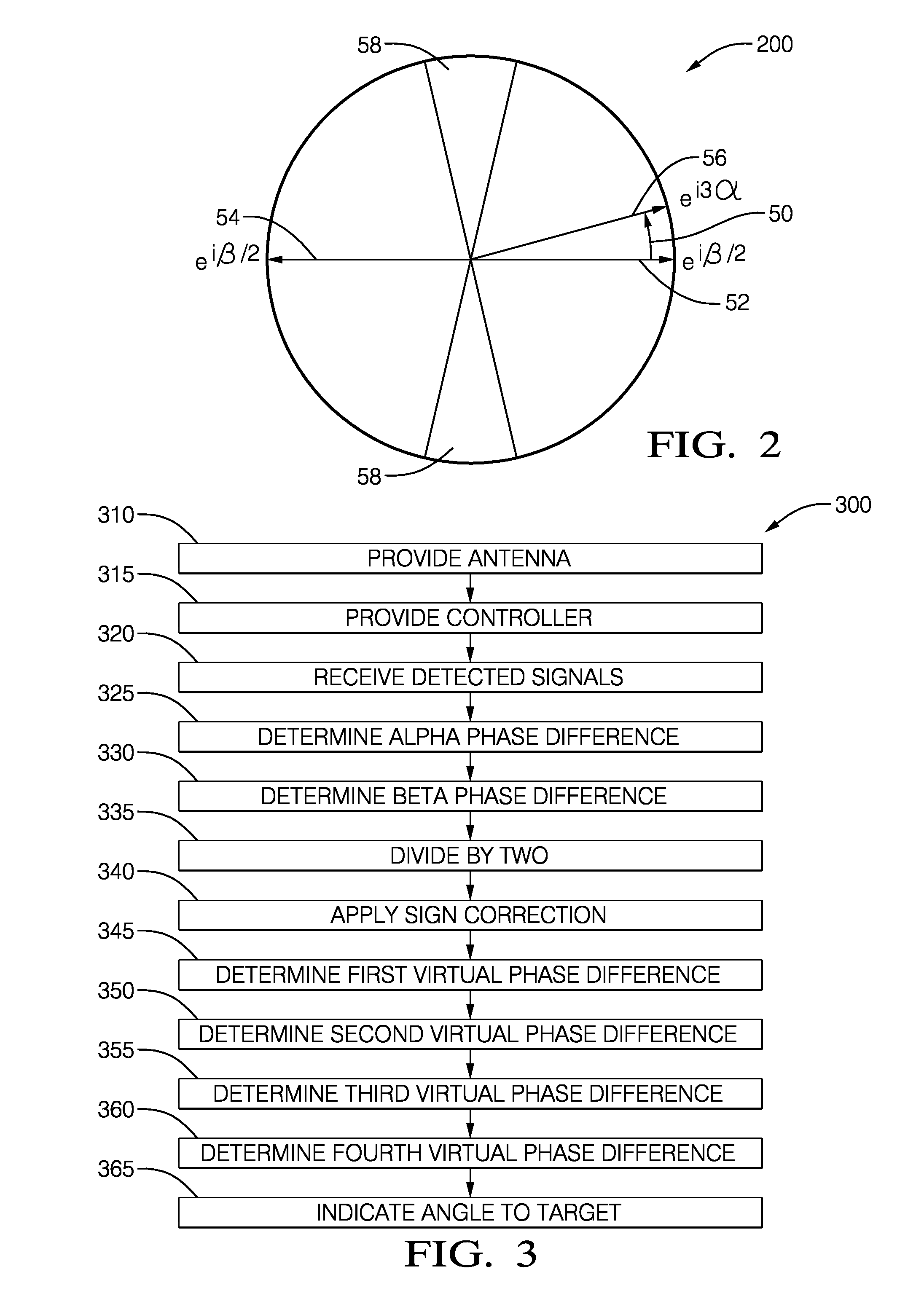Radar system and method for virtual antenna signals
a virtual antenna and antenna technology, applied in the field of radar systems with antenna arrays, can solve the problems of compounding the error in measuring the phase difference of detected signals from narrow spaced antenna elements
- Summary
- Abstract
- Description
- Claims
- Application Information
AI Technical Summary
Benefits of technology
Problems solved by technology
Method used
Image
Examples
Embodiment Construction
[0011]FIG. 1 illustrates a non-limiting example of a radar system, hereafter referred to as the system 10. The system 10 is generally configured to process a reflected signal 12 detected by a radar antenna, hereafter the antenna 14. While not shown, it will be understood by those in the art that the reflected signal 12 is the result of a target 16 reflecting a transmitted signal (not show) emitted by a transmit antenna (not shown) that may be part of the system 10, as will be recognized by those in the art. A suitable frequency for the reflected signal 12 is 76.5* 10̂9 Hertz (76.5 GHz), so an example wavelength of 2.6 millimeters (mm) will be used for the discussion that follows. The examples presented herein are non-limiting as those skilled in the art will recognize that dimensions of the antenna 14 can be scaled or otherwise altered to adapt the antenna 14 for operation at a different radar frequency.
[0012]The antenna 14 includes a reference element 20, and an alpha element 22 sp...
PUM
 Login to View More
Login to View More Abstract
Description
Claims
Application Information
 Login to View More
Login to View More - R&D
- Intellectual Property
- Life Sciences
- Materials
- Tech Scout
- Unparalleled Data Quality
- Higher Quality Content
- 60% Fewer Hallucinations
Browse by: Latest US Patents, China's latest patents, Technical Efficacy Thesaurus, Application Domain, Technology Topic, Popular Technical Reports.
© 2025 PatSnap. All rights reserved.Legal|Privacy policy|Modern Slavery Act Transparency Statement|Sitemap|About US| Contact US: help@patsnap.com



